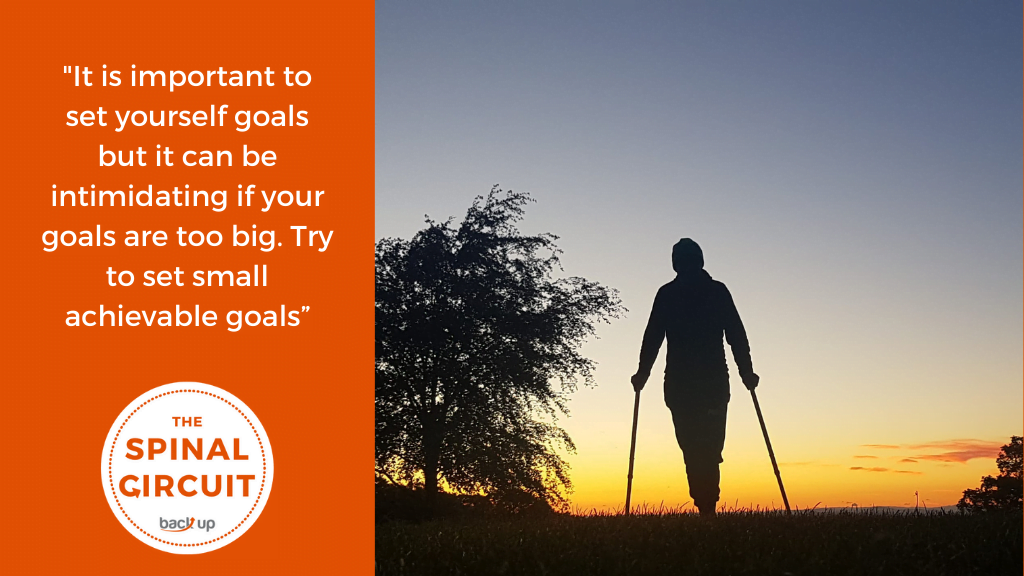Regularly walking: the benefits for those with and without a spinal cord injury
10 February 2022

With our Spinal Circuit challenge coming up in March 2022, we spoke to specialist physiotherapist at The Queen Elizabeth National Spinal Injuries Unit in Glasgow, Susan Gilhespie. Read on to discover the benefits of walking regularly and for Susan’s top tips on how to integrate walking into your current routine.
Benefits of regular walking
Walking is a great way to keep fit and healthy for those with a spinal cord injury able to walk. But also for those who do not have an injury. After a spinal cord injury, some people can walk moderate to long distances, while others manage a few steps with a walking aid and assistance. Most people who can walk can improve their walking endurance, and possibly even their fitness, over time by gradually increasing how much they walk.
There are many health benefits to walking on a regular basis, particularly when it’s strenuous enough to increase the heart rate and cause a slight shortness in breath. This type of physical activity can decrease blood pressure, help maintain a healthy heart and can contribute to weight loss, particularly if accompanied by a healthy diet. Walking also helps maintain bone strength and keeps the muscles and joints of your lower limbs flexible. By integrating walking into your daily routine, where it is safe to do so, you’ll start to notice the benefits.
Physical activity, including walking, can help to reduce stress, and improve mental health and wellbeing. These effects are enhanced if you’re able to walk outdoors.
People with a spinal cord injury who can walk
The current physical activity guidelines for individuals with spinal cord injury are for a minimum of 20 minutes of aerobic exercise, twice a week to improve your fitness or a minimum of 30 minutes, three times a week to reduce your cardiovascular risk factors and improve body composition. However, for many these guidelines will be difficult or even impossible to achieve in one go. Instead, these guidelines can be broken down into smaller chunks or walking may just be one part of your overall physical activity time targets. Remember that for health benefits you should feel slightly short of breath, but still be able to talk in sentences.
It’s important to set yourself goals but it can be intimidating if your goals are too big. Try to set small achievable goals, which will help you meet your bigger goal. This might be to walk a few metres further in two weeks then to the front door in a month. Or to walk around the block in one month then to the local shop in two months.
A good tip when increasing your walking distance is to always remember the return journey! Adding five minutes to your outward journey will be ten minutes extra in total, so make sure you have enough energy to get home. Walking with a friend may also help pass the time and give you the motivation to push yourself. They may also be able bring your wheelchair along, if you have one, so that you can rest when you need to. If you’re out by yourself when increasing your walking distance, take a mobile phone in case you get tired or make sure you know where you can rest before you set off.
Top Tips
- Aim to walk as part of your overall physical activity at least two-three times per week
- Aim to be slightly short of breath
- Set small achievable goals as a means to meet a bigger goal
- Try to buddy up with a friend to help you stick to your goals
- Have a back up plan if you get tired
Sign up for the Spinal Circuit
Our Spinal Circuit challenge in March gives you the opportunity to set yourself a goal and our community will encourage and support you to achieve it. All whilst supporting Back Up’s vital work. Sign up today and set your goal.
References:
Home — Physical Activity Guidelines for Adults with Spinal Cord Injury (ubc.ca)


